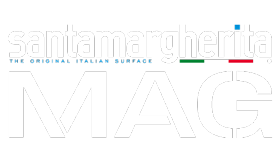The big change underway in the building industry focuses on so-called green building, i.e. a design and building method based on lower environmental impact.
Italian environmental association Legambiente and the Recycle Observatory have drawn up an interesting report on the top 100 healthiest and most sustainable materials. The aim of the report – entitled “100 materials for a new way of building”, the result of the joint effort of Legambiente and the Recycle Observatory – is to illustrate the evolution in progress, for years now, in the building sector through a detailed analysis of the materials with the highest performance levels. This provides designers and consumers with a tool to support them when making design choices in the future, regarding the renovation of a flat or the construction of a new building.
The report classifies materials according to three categories:
- Healthy, natural materials
- Recycled materials and aggregates
- Innovative materials and systems
“The 100 sheets feature technologies designed to turn a problem – for instance waste deriving from demolitions, a massive issue in central Italy after the recent earthquakes – into a resource, with the transformation into bricks. Or composite materials using natural materials with certified performance by going back to old methods and expertise. Moreover, systems designed to improve performance in the event of an earthquake when renovating heritage buildings – unfortunately a very topical issue – or to attain high energy and environmental standards.”
Plus, each sheet highlights the criteria used to select a specific material:
- Innovative features
- Supply chain and material lifecycle
- Environmental features
- Certifications
Moreover, the sheets prove that now there are no longer technical reasons that can be used as an excuse to put off an environmentally sustainable approach in the building sector and that, on the contrary, the path towards environmental sustainability generates overall savings thanks to the use of fewer materials and less energy.
Namely, recycling is the key that would really open up a new and sustainable scenario for the construction sector, able to bring the focus back on the project, the relationship with the region, and quality in work and training. Precisely this category, which in the project is called “Recycled materials”, includes a quartz and resin agglomerate by Santamargherita, 90% of which consists of recycled material. The slabs of this material can be used to cover floors and walls in indoor settings, especially kitchen floors and worktops. This is also because of its certifications, which make it suitable for healthy premises and for direct contact with food. Indeed, it meets many of the requirements in the LEED ® V4 mapping. LEED ® is a voluntary certification scheme that can be applied to any kind of building and is related to the lifecycle of the building, from design to construction. As regards products, there is no actual LEED certification, but a mapping: indeed, the company requesting it will be inspected by a LEED technician who will analyse the product to be certified and, if it has the necessary credits, will issue an LEED mapping.
Giorgio Tartaro
